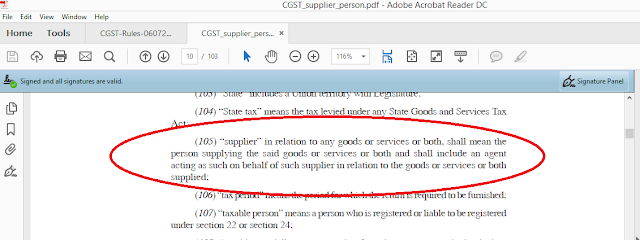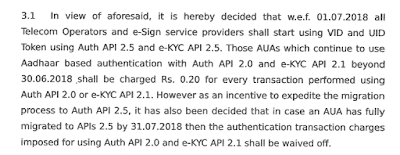Aadhaar-based ESign services have paused since 14 Dec 2018 because UIDAI has said that these would be used only for purposes of DBT / Subsidies or those permitted by law. Earlier, the Supreme Court had invalidated Section 57 of Aadhaar Act essentially preventing private companies from performing eKYC.
In this regard:
1) A Gazette notification of Jan 28, 2015 documents a rule made by Department of Electronics and Information Technology mentioning eKYC-based eSignatures. But this is a rule and not a law (as required by SC judgement).
2) Neither UIDAI nor CCA has issued a statement saying general eSignatures are valid after Dec 14 2018 other than for DBT / Subsidy purposes.
3) At least one Certifying Authority has avoided answering questions regarding the legality of eSignatures issued by them (!). They have actually asked their subscribers to provide a declaration which indemnifies them.
This is an absurd scenario, where the service-provider himself is not ready to vouch for the validity of the service he provides, but wants his consumer to do so, and indemnify the service-provider.
4) The Govt has announced it will bring in suitable laws that will permit use of eKYC by private players. (This implies that such a law doesnt currently exist.)
Given all of the above, it is unwise to use eSignatures beyond Dec 14 2018 for agreements / contracts / forms / etc because their validity is uncertain.
It is hoped that the authorities will soon provide clarity and guidance so that there is no ambiguity.
In this regard:
1) A Gazette notification of Jan 28, 2015 documents a rule made by Department of Electronics and Information Technology mentioning eKYC-based eSignatures. But this is a rule and not a law (as required by SC judgement).
3) At least one Certifying Authority has avoided answering questions regarding the legality of eSignatures issued by them (!). They have actually asked their subscribers to provide a declaration which indemnifies them.
This is an absurd scenario, where the service-provider himself is not ready to vouch for the validity of the service he provides, but wants his consumer to do so, and indemnify the service-provider.
4) The Govt has announced it will bring in suitable laws that will permit use of eKYC by private players. (This implies that such a law doesnt currently exist.)
Given all of the above, it is unwise to use eSignatures beyond Dec 14 2018 for agreements / contracts / forms / etc because their validity is uncertain.
It is hoped that the authorities will soon provide clarity and guidance so that there is no ambiguity.







